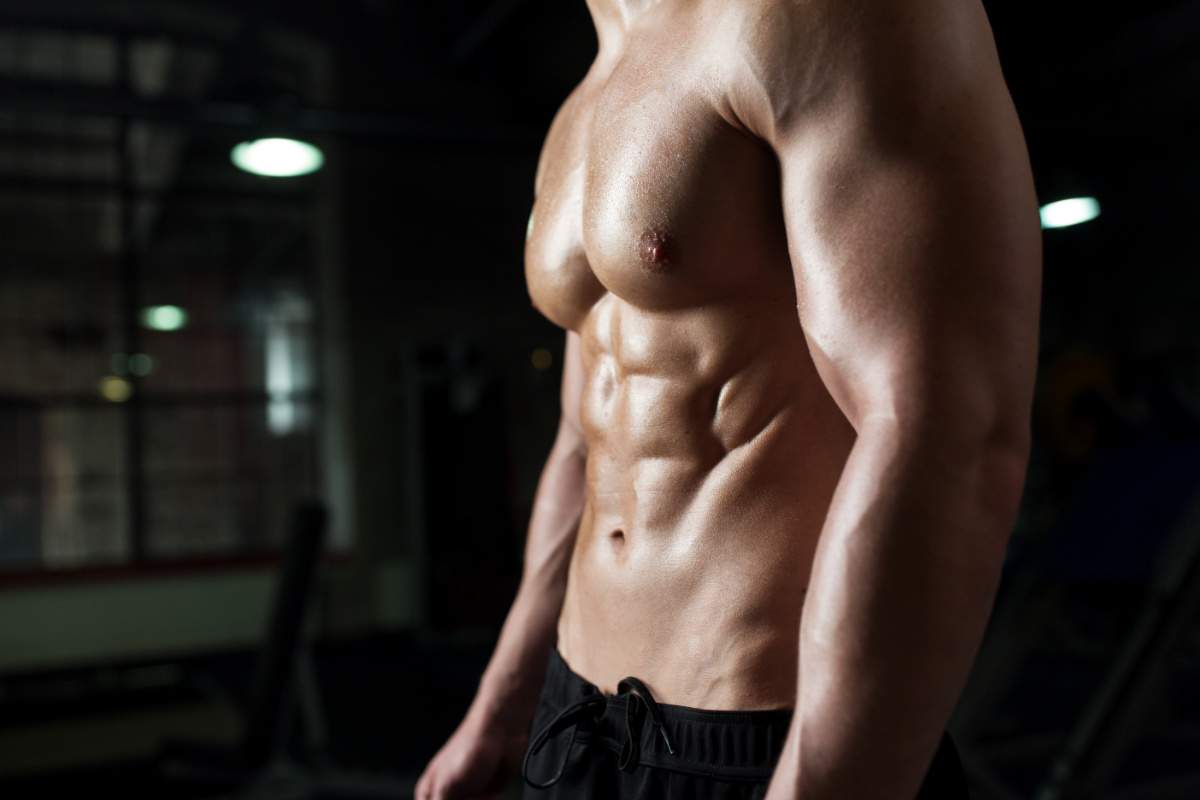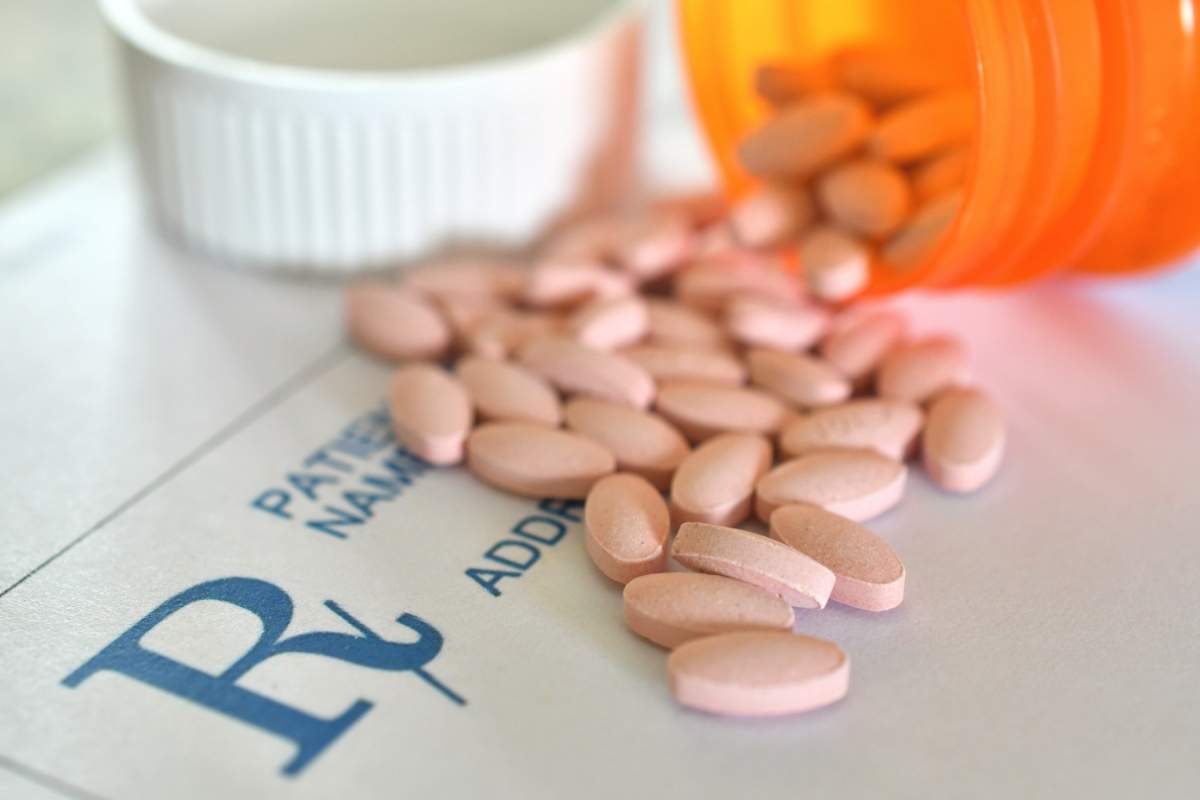Around 1 to 2 percent of men have visible six-pack abs. For men over 35, that number drops to roughly 0.004%—about 1 in 25,000. Most men can develop visible abdominal definition if they get their body fat low enough, but the vast majority never do.
Why most guys don’t get there: It’s not genetics stopping them. It’s that reaching 10-12% body fat consistently takes serious commitment to training and eating. Life gets busy. Priorities shift. Most people don’t stick with it long enough.
Getting Your Abs to Show
Drop your body fat to the right level
Your abs are there already—they’re just hidden under a layer of fat. Men typically need to hit 10-12% body fat for a clear six-pack to appear, though you’ll start seeing faint outlines around 14-15%. The lower you go below 10%, the more dramatic the cuts and definition. This is pure physics. Fat sits on top of muscle. No getting around it.
The mechanism is straightforward: your rectus abdominis muscle (the one that creates the six-pack shape) doesn’t need to be trained differently or “targeted” to show up. It responds to regular resistance training just like any other muscle. Once your body fat percentage drops low enough, the definition emerges automatically.
Combine resistance training with caloric deficit
You need to lose fat without losing muscle. Resistance training during a calorie deficit is the most effective approach—research shows it reduces body fat by 3.8% more than calorie restriction alone, and preserves lean mass while you’re dropping weight. Hit the weights 3-4 times per week with compound movements (squats, deadlifts, rows, presses). These build muscle density everywhere, including your core.
The reason this works: resistance training sends a signal to your body to keep muscle tissue during fat loss. Without that signal, your body burns through muscle along with fat. You end up smaller but still soft-looking. Strength training protects the muscle underneath.
Stick with consistent aerobic activity
Aerobic work reduces body fat faster than resistance training alone, particularly around the midsection and visceral fat (the dangerous stuff inside your abdomen). Aim for 150+ minutes per week at moderate intensity—walking, cycling, running, rowing. It doesn’t need to be fancy or high-intensity. Consistency beats intensity every time.
The science: aerobic training improves what’s called metabolic flexibility—your body’s ability to shift between burning fat and carbs depending on what you’re doing. Better metabolic flexibility means more total fat oxidation at rest, which accelerates progress.
9 Steps To Shed 5-10kg In 6 Weeks
Includes an exercise plan, nutrition plan, and 20+ tips and tricks.
Download FreeDial in your protein intake
Shoot for 0.7-1g per pound of body weight daily. Protein reduces hunger, preserves muscle during fat loss, and slightly increases the calories you burn digesting food. It’s one of the few “hacks” that actually works without being complicated.
During calorie restriction, protein becomes critical because it keeps your metabolic rate from dropping as much. Your body naturally tries to slow down when calories drop—protein blunts that response.
Accept the timeline
A guy at 20% body fat needs to drop to 12% to see abs clearly. At a realistic fat loss rate of 0.5-1% per week, that’s 8-16 weeks minimum. If you’re starting higher, it takes longer. There’s no shortcut. The guys with visible abs didn’t get there overnight. They got there by showing up consistently for months.
Questions People Ask
What body fat percentage do I need to see visible six pack abs?
Men typically see ab outlines around 14-15% body fat. Clear, defined six-packs appear at 10-12%. Below 10%, you get deep cuts and separation between each muscle. Your genetics determine how many abs you have (6, 8, or 4), not whether they’ll show. Around 60% of people are born with six distinct abdominal segments. About 20% have eight. Roughly 15% max out at four.
Can I see abs at 15% body fat?
Yes—but only faint outlines, mostly in the upper abs. Full definition needs to be lower. Most people describe this as “starting to see something” rather than having visible abs.
Does ab training make abs bigger so they show sooner?
No. Direct ab exercises (crunches, cable crunches, ab wheels) build muscle in your rectus abdominis, but they don’t make abs visible faster. You still need to drop body fat. Ab training is useful for adding thickness and size to the muscle itself, so once you’re lean, they look more impressive. But it doesn’t replace the fat loss part.
Why do some guys see abs at 20% body fat and others don’t?
Fat distribution varies by genetics and age. Some men store fat preferentially around the midsection. Others distribute it more evenly. Also, muscle thickness matters—a guy with more developed ab muscles will show definition earlier than someone with thinner muscles at the same body fat percentage. Genetics control both.
Is it harder to get visible abs after 35?
Not impossible, but less common. Men over 35 have lower testosterone and more likely sedentary lifestyles. Metabolism doesn’t slow dramatically with age—inactivity and changed priorities do. The barrier is behavioral, not biological.
What’s the fastest way to get a six pack?
There’s no fast. Fat loss at 1% per week is realistic. Going faster usually means losing muscle. Combine resistance training 3-4x per week, 150+ minutes of moderate cardio weekly, hit your protein target, and eat in a 300-500 calorie deficit. That’s the protocol. Consistency over 12-16 weeks beats everything else.
Do I need to do special ab exercises to get a six pack?
Not to get them visible. General strength training (squats, deadlifts, rows, presses) works your core. Direct ab work is optional. If you want thicker, more prominent abs once you’re lean, then add ab-specific work. But the visibility comes entirely from dropping body fat.
How long does it take to go from 25% body fat to visible abs?
Roughly 12-20 weeks at a sensible pace (0.5-1% body fat loss per week). You’re dropping 13-15 percentage points. That’s substantial. Rushing causes muscle loss and doesn’t stick long-term.
Can women see abs at a higher body fat percentage than men?
Yes. Women need roughly 16-20% body fat for visible ab definition, versus 10-12% for men. This is partly due to essential fat requirements for hormones and reproduction, and partly because women tend to store more fat subcutaneously (under the skin) rather than in the abdomen.
Does cardio kill muscle?
Not if you eat enough protein and do strength training. Cardio is a tool for fat loss. Combine it with resistance work and adequate protein, and you preserve muscle while dropping fat. Cardio alone, without strength training, will cause some muscle loss.
What’s easier—diet or training—for getting visible abs?
Diet. You can out-train a bad diet, but it’s inefficient. Dropping 500 calories from eating beats running for an hour trying to burn 500 calories. Both work. Food choices are just faster and more sustainable. The real answer: you need both working together.
The Next Step
Pick one thing: track your food for a week and see where you actually sit calorically. Most guys underestimate by 20-30%. Once you know your baseline, drop to a 300-500 calorie deficit. Start resistance training 3-4 times a week if you aren’t already—full-body movements, nothing fancy. Add 150+ minutes of walking or cycling weekly. Aim for 0.8g protein per pound of body weight.
That’s the system. Not revolutionary. Not complicated. Just consistent for 12-16 weeks straight. The guys with visible abs didn’t find a shortcut. They found a routine they could actually stick to.

